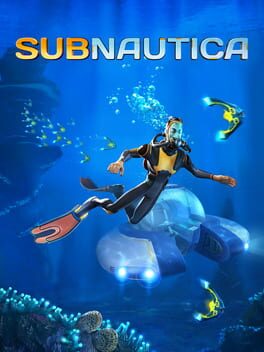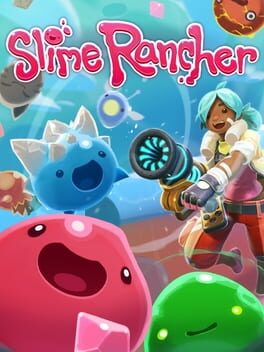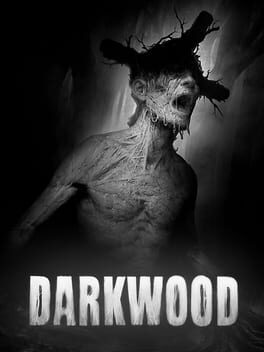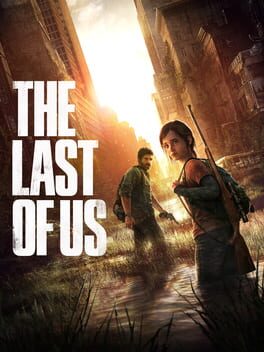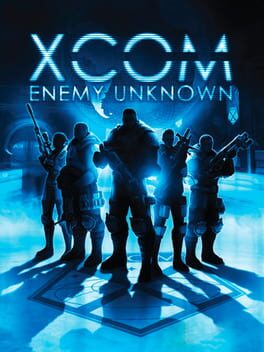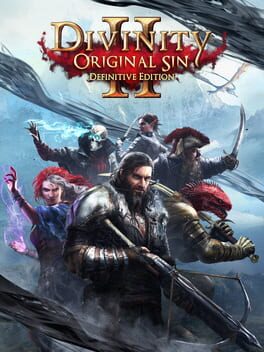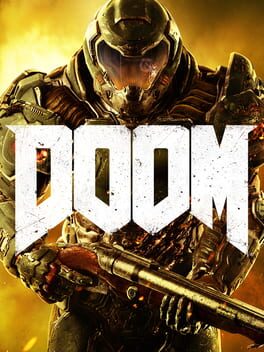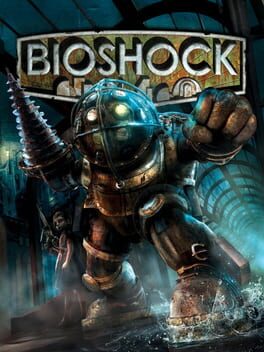PistolPumpkin
2023
I love both action games and rhythm games, so I thought HI-Fi Rush would be perfect for me when I saw its genre mashing gameplay and vibrant artstyle. But as much as I wanted to enjoy it, I could never really get into a groove with this game because I was constantly hurdling over little annoyances and interruptions in order to get to the fun parts. I still stuck around for the delightful spectacle and animations, but overall it ended up being a near miss for me.
The main issue was the very slow buildup of mechanics and difficulty. The elongated tutorial and very basic early game probably helped to introduce this unique genre mixture to many players, but it didn’t quite work for me. Hours into Hi-Fi Rush, I was still waiting for the gameplay to drop the beat and actually start. I was already half way through the game by the time the combat ramped up enough to be interesting and challenging. Even then, the good combat sections tended to be too short for my tastes, frequently interrupted by pointless dialogue and very clunky platforming.
I also disliked that Chai was always hitting things on beat even when my inputs were off. This might be an odd complaint, but I wanted to easily see what I was doing wrong when I wasn’t getting the “good” or “perfect” beats. Was I too slow with that attack, or too fast? I couldn’t know, but it also didn’t matter because Chai was doing his rock star thing regardless of my mistakes. The guardrails eliminated the lows of defeat, but also flattened the highs of victory.
After the credits rolled I did consider getting into the new game+ with maybe a bump in difficulty, but I realized I’d have to endure the terrible story again. Nothing in the writing worked for me. The humor rarely landed, the characters were awfully two dimensional, and Chai was an embodiment of the insufferable “idiot hero” trope. It would’ve been fine if the dialogue was contained in easily skippable cutscenes and I could forget about the characters during gameplay. But no, the chatter was constant, while I just wanted to listen to music and smash some robots.
So forgoing the new game+, I gave the arcade modes a try. These were actually pretty fun, and were closer to the experience I was looking for from the beginning. No interruptions, no platforming, just pure rhythm combat. I didn’t get too far into it because I was ready to move on to other games by then, but if I ever went back to HI-Fi Rush again, I’d be sticking to that little arcade machine.
The main issue was the very slow buildup of mechanics and difficulty. The elongated tutorial and very basic early game probably helped to introduce this unique genre mixture to many players, but it didn’t quite work for me. Hours into Hi-Fi Rush, I was still waiting for the gameplay to drop the beat and actually start. I was already half way through the game by the time the combat ramped up enough to be interesting and challenging. Even then, the good combat sections tended to be too short for my tastes, frequently interrupted by pointless dialogue and very clunky platforming.
I also disliked that Chai was always hitting things on beat even when my inputs were off. This might be an odd complaint, but I wanted to easily see what I was doing wrong when I wasn’t getting the “good” or “perfect” beats. Was I too slow with that attack, or too fast? I couldn’t know, but it also didn’t matter because Chai was doing his rock star thing regardless of my mistakes. The guardrails eliminated the lows of defeat, but also flattened the highs of victory.
After the credits rolled I did consider getting into the new game+ with maybe a bump in difficulty, but I realized I’d have to endure the terrible story again. Nothing in the writing worked for me. The humor rarely landed, the characters were awfully two dimensional, and Chai was an embodiment of the insufferable “idiot hero” trope. It would’ve been fine if the dialogue was contained in easily skippable cutscenes and I could forget about the characters during gameplay. But no, the chatter was constant, while I just wanted to listen to music and smash some robots.
So forgoing the new game+, I gave the arcade modes a try. These were actually pretty fun, and were closer to the experience I was looking for from the beginning. No interruptions, no platforming, just pure rhythm combat. I didn’t get too far into it because I was ready to move on to other games by then, but if I ever went back to HI-Fi Rush again, I’d be sticking to that little arcade machine.
2014
Subnautica was an incredible adventure full of discovery and thrill, accentuated by an intense, almost terrifying sense of wonder that I hadn’t experienced from any other game until Outer Wilds came along. The complex and naturally hostile planet 4546B made me feel completely insignificant and alien in its deep, expansive waters. With minimal guidance from the game itself, I only had my own curiosity and observations to help me progress, and as I went deeper, I fell in love with this seemingly ordinary survival crafting game that kept subverting and exceeding all my expectations.
The survival crafting mechanics were enjoyable, and I’ll always be proud of my ridiculously lavish underwater mansion by the Aurora, but it wasn’t actually the main strength of the game. It was good to have for subtle direction and mechanical progression, but If this isn’t a genre for you, I’d recommend just playing in freedom or creative mode. And no one should bother with the “hardcore” mode at all since the game is too unstable and buggy for that. Fortunately, there is so much more to Subnautica than just mining rocks and catching fish to live another day, and it’s best to discover those for yourself.
The survival crafting mechanics were enjoyable, and I’ll always be proud of my ridiculously lavish underwater mansion by the Aurora, but it wasn’t actually the main strength of the game. It was good to have for subtle direction and mechanical progression, but If this isn’t a genre for you, I’d recommend just playing in freedom or creative mode. And no one should bother with the “hardcore” mode at all since the game is too unstable and buggy for that. Fortunately, there is so much more to Subnautica than just mining rocks and catching fish to live another day, and it’s best to discover those for yourself.
2016
Slime Rancher was a strange game that consumed me for an entire week then quickly left my thoughts once I finished it. The gameplay loop of management, exploration, upgrades, and expansion was airtight with enough content to keep the dopamine juices flowing for 30 hours. The simple, colorful art style was very inviting, and the adorable slimes triggered a “gotta catch’em all” compulsion in me.
In short, it was the perfect game to sink time into during the covid lockdown era. The mechanics were varied enough to be entertaining but not complex enough to require much brain power. The story was some forgettably wholesome background noise about living life to the fullest. It wasn’t the kind of game I’d normally go for, but Slime Rancher delivered cozy satisfaction when I really needed it.
In short, it was the perfect game to sink time into during the covid lockdown era. The mechanics were varied enough to be entertaining but not complex enough to require much brain power. The story was some forgettably wholesome background noise about living life to the fullest. It wasn’t the kind of game I’d normally go for, but Slime Rancher delivered cozy satisfaction when I really needed it.
2017
Darkwood was a fantastic horror game that delivered an unforgettable experience full of immersion, mystery, and pure dread. At a glance, the unusual top down perspective and the simple, pixelated art style didn’t seem very effective for the genre. However, this game showed me that the artistry of horror games was not in the graphics or in any particular camera perspective, but in its fluid mastery over atmosphere and tension.
From beginning to end, tension in Darkwood never really simmered down. From my first day in the cursed Polish woods I was scrambling to survive and prepare for the coming onslaught of spirits and monsters at night. Acid Wizard’s impeccably eerie sound design cast a sinister mood onto even the most tranquil of golden meadows, and indeed as I delved further into the forest, the beauty of nature gave way to reveal hidden nightmares in the shadows. At night, these nightmares launched full on attacks at my ramshackle cabin, and the desperate struggle to remain alive for one more minute, one more second, praying for the salvation of sunrise was more compelling than any horror set piece in higher budget games.
The world building of Darkwood often reminded me of Jeff Vendermeer’s Annihilation, a novel about a strange alien force that gradually refracts and assimilates all organic matter within its range to create illogical, monstrous, yet sometimes beautiful new creatures. It was a terrifying concept, and I loved exploring it again in Darkwood as well. My only gripe with the lore was that too much of it was obfuscated. I think I managed to piece together about 30% of the game’s full story. Most of my appreciation for Darkwood’s deep lore came from reading other people’s interpretations, and I wished these fascinating details had been more apparent during my playthrough.
I think having a more concrete story and gradual unraveling of the game’s mysteries would’ve helped immensely in the latter half of Darkwood. This game was a lot longer than I had expected it to be, and while the excellent gameplay and atmosphere stayed engaging for 20 hours or so, it became increasingly stretched and frayed past that mark. Gathering loot all day to prepare for another night in the woods was starting to feel like a chore, and I had long given up trying to look for any answers in the story. When I finally reached what looked like an ending I felt relieved and glad to finally let this amazing but overlong adventure conclude.
From beginning to end, tension in Darkwood never really simmered down. From my first day in the cursed Polish woods I was scrambling to survive and prepare for the coming onslaught of spirits and monsters at night. Acid Wizard’s impeccably eerie sound design cast a sinister mood onto even the most tranquil of golden meadows, and indeed as I delved further into the forest, the beauty of nature gave way to reveal hidden nightmares in the shadows. At night, these nightmares launched full on attacks at my ramshackle cabin, and the desperate struggle to remain alive for one more minute, one more second, praying for the salvation of sunrise was more compelling than any horror set piece in higher budget games.
The world building of Darkwood often reminded me of Jeff Vendermeer’s Annihilation, a novel about a strange alien force that gradually refracts and assimilates all organic matter within its range to create illogical, monstrous, yet sometimes beautiful new creatures. It was a terrifying concept, and I loved exploring it again in Darkwood as well. My only gripe with the lore was that too much of it was obfuscated. I think I managed to piece together about 30% of the game’s full story. Most of my appreciation for Darkwood’s deep lore came from reading other people’s interpretations, and I wished these fascinating details had been more apparent during my playthrough.
I think having a more concrete story and gradual unraveling of the game’s mysteries would’ve helped immensely in the latter half of Darkwood. This game was a lot longer than I had expected it to be, and while the excellent gameplay and atmosphere stayed engaging for 20 hours or so, it became increasingly stretched and frayed past that mark. Gathering loot all day to prepare for another night in the woods was starting to feel like a chore, and I had long given up trying to look for any answers in the story. When I finally reached what looked like an ending I felt relieved and glad to finally let this amazing but overlong adventure conclude.
2019
I started playing this game thinking I wouldn't like it. After purchasing the game I made the mistake of going online to read all the "walking simulator" memes and internet negativity, so I was a bit worried that my money had been misspent. The first few hours were definitely a walking simulator—I faceplanted a lot, lost footing in rivers, fell down cliffs, and there wasn't much else happening other than the convoluted story that felt more like Kojima’s stream of consciousness ramblings than an actual narrative. All that was keeping me playing were the striking cinematography and frankly, Mads Mikkelsen.
Then around chapter 3, it clicked. The world opened up, the mechanics opened up, and the story opened up. I started to get some creative gears, with more ways to fight enemies, and more types of environments to traverse through. The journey was no longer "hold R2 and L2 and hope for the best" but a proper challenge that I could strategize around. I was starting to appreciate the difficult walking experience in the beginning because it made the progression that much more impactful.
For example I had never been so excited about finding a single truck in any other video game. In Death Stranding, unloading my cargo into my first truck and getting into the driver’s seat was like finally getting a legendary sword in an RPG after toiling for hours with a broken dagger. I could finally carry all the ceramics I needed to build roads! Build a line of bridges over all the ravines! Deliver a whole city’s ration of underwear and beer in one trip! Every single upgrade and addition to my porter toolbox had such gratifying weight and potential to them. By the end game I was a literal god among porters, flying over mountains on my carefully constructed ziplines.
Building infrastructure was a big part of the game. I always liked building things in games, but in Death Stranding these mechanics felt more meaningful because they tied in with the general themes of connection and altruism very nicely. Not only were my bridges and ziplines useful to me, but I was also notified every time another player found them useful. Community interactions were strictly designed to be as wholesome as possible. Whoever shoved that crate of 1000 metals into a postbox by the Weather Station’s road builder was my anonymous hero of that day.
The atmosphere was also masterful, and often far more effective at getting me invested into the world than the actual script. This was my favorite moment in Death Stranding: During a delivery I had to cross a particularly treacherous river rapids. I fell once and got swept away by the river, which destroyed all my cargo. On my second try I managed to cross it slowly, following the community built signs. Then I found a cave to rest. I sat there playing BB a song on my harmonica, watching the rain fall into the river and the misty mountains beyond. Those serene moments of gentle connection after difficult journeys made Death Stranding truly special to me.
Then around chapter 3, it clicked. The world opened up, the mechanics opened up, and the story opened up. I started to get some creative gears, with more ways to fight enemies, and more types of environments to traverse through. The journey was no longer "hold R2 and L2 and hope for the best" but a proper challenge that I could strategize around. I was starting to appreciate the difficult walking experience in the beginning because it made the progression that much more impactful.
For example I had never been so excited about finding a single truck in any other video game. In Death Stranding, unloading my cargo into my first truck and getting into the driver’s seat was like finally getting a legendary sword in an RPG after toiling for hours with a broken dagger. I could finally carry all the ceramics I needed to build roads! Build a line of bridges over all the ravines! Deliver a whole city’s ration of underwear and beer in one trip! Every single upgrade and addition to my porter toolbox had such gratifying weight and potential to them. By the end game I was a literal god among porters, flying over mountains on my carefully constructed ziplines.
Building infrastructure was a big part of the game. I always liked building things in games, but in Death Stranding these mechanics felt more meaningful because they tied in with the general themes of connection and altruism very nicely. Not only were my bridges and ziplines useful to me, but I was also notified every time another player found them useful. Community interactions were strictly designed to be as wholesome as possible. Whoever shoved that crate of 1000 metals into a postbox by the Weather Station’s road builder was my anonymous hero of that day.
The atmosphere was also masterful, and often far more effective at getting me invested into the world than the actual script. This was my favorite moment in Death Stranding: During a delivery I had to cross a particularly treacherous river rapids. I fell once and got swept away by the river, which destroyed all my cargo. On my second try I managed to cross it slowly, following the community built signs. Then I found a cave to rest. I sat there playing BB a song on my harmonica, watching the rain fall into the river and the misty mountains beyond. Those serene moments of gentle connection after difficult journeys made Death Stranding truly special to me.
This is the best video game writing I've ever experienced, probably up there with some of the best novels I've read. The beauty of the story is that it's not some standard fantasy-driven wish fulfillment adventure. Despite the general fantastical mood, Disco Elysium tells a story about real life, ugly themes like addiction, poverty, politics, and obsession. The RPG elements are very personal and inwardly focused in the mindscape of Harry. While it may not seem exciting at first, it's quite an emotional rollercoaster. The setting, rendered with gorgeous impressionistic art, feels like a real lived-in city both hated and loved by its residents. I enjoyed every bit of it.
2013
I’ve played through this game twice, watched a bunch of playthroughs, and of course watched the show. It’s made me cry every single time. Usually rewatches or replays never feel the same as the first time, but The Last of Us always manages to deliver a powerful emotional experience.
I think the magic comes from the very basic and timeless core of the story. Sure, there's the zombie apocalypse and plenty of action, but those are not the focus. The main story is just about two people surviving in terrible situations, bonding and growing together. It's a pretty common trope, but sometimes a trope is universal because it speaks to the core of human experience. The Last of Us is one of the best stories to showcase that.
The gameplay still holds up very well. The combat is both satisfying and terrifying. That first chapter introducing the infected always feels brutal, but TLOU does a great job of slowly empowering the player, opening options, and allowing a variety of playstyles. I also love the crafting mechanic. It’s simple, not too many things to keep track of, but there’s enough choices there to encourage some planning.
To me, The Last of Us is still one of the best in its genre and I don’t think it will ever age out of relevance.
I think the magic comes from the very basic and timeless core of the story. Sure, there's the zombie apocalypse and plenty of action, but those are not the focus. The main story is just about two people surviving in terrible situations, bonding and growing together. It's a pretty common trope, but sometimes a trope is universal because it speaks to the core of human experience. The Last of Us is one of the best stories to showcase that.
The gameplay still holds up very well. The combat is both satisfying and terrifying. That first chapter introducing the infected always feels brutal, but TLOU does a great job of slowly empowering the player, opening options, and allowing a variety of playstyles. I also love the crafting mechanic. It’s simple, not too many things to keep track of, but there’s enough choices there to encourage some planning.
To me, The Last of Us is still one of the best in its genre and I don’t think it will ever age out of relevance.
2010
A Stephen King inspired horror game about a depressed writer cursed with supernatural creative powers sounded like a perfect premise for me. I expected to be terrified, lost, and fully engrossed in a dark and atmospheric setting, but the only quality I found that this game shared with Stephen King’s novels was a desperate need for an editor.
Alan Wake was only a 10 hour game yet it somehow still felt too long. I can usually appreciate a slow burn horror, but the flat, tropey characters failed to carry the narrative and I struggled to get invested in them. It also didn’t help that the story was doled out in pieces between extremely repetitive and dull combat sections. The gameplay loop was very basic: press a button to shine a light, then press another button to shoot a gun. It never evolved or deviated past this loop, like playing a tutorial from beginning to end. The enemies were mostly copy-pasted shadow men, or occasionally when the Darkness wanted to spice it up, some shadow birds or trucks. The reward for finishing these encounters was a bit of cutscene narrated with Alan’s stodgy monologue.
This game was such a disappointment for me because I jumped into it right after having a wonderful time with Remedy’s more recent title, Control. I was ready to learn more about their “Remedy-verse” and wanted to connect the dots in the lore myself by playing all of their older games. Alan Wake quickly put an end to that endeavor, and I’m now happy to just read about the cool details on a wiki.
Alan Wake was only a 10 hour game yet it somehow still felt too long. I can usually appreciate a slow burn horror, but the flat, tropey characters failed to carry the narrative and I struggled to get invested in them. It also didn’t help that the story was doled out in pieces between extremely repetitive and dull combat sections. The gameplay loop was very basic: press a button to shine a light, then press another button to shoot a gun. It never evolved or deviated past this loop, like playing a tutorial from beginning to end. The enemies were mostly copy-pasted shadow men, or occasionally when the Darkness wanted to spice it up, some shadow birds or trucks. The reward for finishing these encounters was a bit of cutscene narrated with Alan’s stodgy monologue.
This game was such a disappointment for me because I jumped into it right after having a wonderful time with Remedy’s more recent title, Control. I was ready to learn more about their “Remedy-verse” and wanted to connect the dots in the lore myself by playing all of their older games. Alan Wake quickly put an end to that endeavor, and I’m now happy to just read about the cool details on a wiki.
2012
Years ago, I was introduced to the genre of turn-based tactics games with XCOM: Enemy Unknown, and for better or worse I was left chasing that incredible high ever since. The only other game that could provide that perfect mixture of strategy, risk management, and the iconic kick of RNG was none other than XCOM 2. While the sequel largely supplanted this one in terms of pure gameplay, every once in a while I still get the hankering to start a campaign in this atmospheric sci-fi horror setting to beat down aliens with my stompy mech soldiers.
But why was I so instantly captivated by this game? This wasn’t something I could easily answer at first while getting thoroughly obliterated as a newbie commander. That first campaign was confusing, brutal, yet still inexplicably fun. 1000 hours of play later, I’ve come to the conclusion that XCOM has the most perfect loop of interesting decisions and significant consequences constantly alternating one after another, keeping players invested all the way up until the endgame. The choices are weighty, varied, difficult but still intuitive to understand. Whether things go right or wrong, both newbies and veterans can always uncover a new layer of strategic depth.
I was hooked on this rapid and dynamic loop of learning, adapting, and gradually molding my troops into badass alien killers. My first campaign didn’t go very well, but as soon as it ended I was pumped to start the journey again with the knowledge that I had gained through my mistakes. Then I did it again, and again, until I finally won my first classic ironman campaign after a long, bloody war with a death toll in the 50s. That victory was one of the most memorable gaming moments in my life, and something I always hope to experience again when playing other strategy games.
But why was I so instantly captivated by this game? This wasn’t something I could easily answer at first while getting thoroughly obliterated as a newbie commander. That first campaign was confusing, brutal, yet still inexplicably fun. 1000 hours of play later, I’ve come to the conclusion that XCOM has the most perfect loop of interesting decisions and significant consequences constantly alternating one after another, keeping players invested all the way up until the endgame. The choices are weighty, varied, difficult but still intuitive to understand. Whether things go right or wrong, both newbies and veterans can always uncover a new layer of strategic depth.
I was hooked on this rapid and dynamic loop of learning, adapting, and gradually molding my troops into badass alien killers. My first campaign didn’t go very well, but as soon as it ended I was pumped to start the journey again with the knowledge that I had gained through my mistakes. Then I did it again, and again, until I finally won my first classic ironman campaign after a long, bloody war with a death toll in the 50s. That victory was one of the most memorable gaming moments in my life, and something I always hope to experience again when playing other strategy games.
Divinity Original Sin 2 had everything I wanted from CRPGs. Rivellon was a huge, immersive and dynamic world, full of secrets to uncover and memorable conflicts to stumble upon in every corner. The story had a somewhat generic start, but was quickly elevated by its cast of interesting origin characters. I was also impressed by how reactive the game was to my decisions, with verisimilitude both in and out of combat. Although I’m usually indifferent towards these typical fantasy settings, I ended up caring deeply about the world and its fate because of my great degree of influence within it.
The combat was amazing. The elemental effects were very fun to manipulate and intuitive to learn, and the armor system added a tactical puzzle that was satisfying to crack. The enemies proved to be quite competent tacticians, and combined with the unique terrain each encounter was designed around, they provided a good amount of challenge that encouraged experimentation. To support this, the game also had great player freedom and lots of tools to tinker with. I could easily respec at any time to try different builds. The crafting system was robust and useful. Skills like teleportation and terrain transmutation rewarded creative thinking on the battlefield with great advantages. I could bend the game as much as I wanted but it never seemed to actually break, but instead became more fun.
This game was very close to perfection for me, but it still had a few flaws that others might find more problematic. The difficulty curve could’ve been smoother, as it was the harshest in the early game and required a bit of XP scrounging until the gameplay opened up. Fortunately DOS2 has easier difficulties available, and a “gift bag” feature that allows players to tune their playthrough with developer supported mods. I also had some issues with the writing in certain spots of the story, especially the ending which felt like a series of rushed revelations and some plot hole ridden choices.
Still, I think the depth and quality of content in DOS2 completely makes up for its shortcomings. It’s no surprise that Larian was able to succeed so well with Baldur’s Gate 3, as the brilliance of that game can be traced directly from DOS2. I’m still hoping they will come back to this series afterwards, because there’s a lot here that can still be explored and fleshed out. Also I just want more games with this incredibly satisfying combat system.
The combat was amazing. The elemental effects were very fun to manipulate and intuitive to learn, and the armor system added a tactical puzzle that was satisfying to crack. The enemies proved to be quite competent tacticians, and combined with the unique terrain each encounter was designed around, they provided a good amount of challenge that encouraged experimentation. To support this, the game also had great player freedom and lots of tools to tinker with. I could easily respec at any time to try different builds. The crafting system was robust and useful. Skills like teleportation and terrain transmutation rewarded creative thinking on the battlefield with great advantages. I could bend the game as much as I wanted but it never seemed to actually break, but instead became more fun.
This game was very close to perfection for me, but it still had a few flaws that others might find more problematic. The difficulty curve could’ve been smoother, as it was the harshest in the early game and required a bit of XP scrounging until the gameplay opened up. Fortunately DOS2 has easier difficulties available, and a “gift bag” feature that allows players to tune their playthrough with developer supported mods. I also had some issues with the writing in certain spots of the story, especially the ending which felt like a series of rushed revelations and some plot hole ridden choices.
Still, I think the depth and quality of content in DOS2 completely makes up for its shortcomings. It’s no surprise that Larian was able to succeed so well with Baldur’s Gate 3, as the brilliance of that game can be traced directly from DOS2. I’m still hoping they will come back to this series afterwards, because there’s a lot here that can still be explored and fleshed out. Also I just want more games with this incredibly satisfying combat system.
2016
I never played the original Doom, so I was surprised to find that this classic shooter formula could feel so refreshing and new after 30 years. I very much enjoyed the purely aggressive gameplay, and while I usually prefer having a little more story in games, I could respect the decision to not get bogged down with too much writing. Besides, the Doom Slayer’s fiercely irreverent attitude towards Samuel Hayden and other major characters was very amusing.
Oh, and the music! I think at least half of this game’s experience was carried by its powerful metal soundtrack. A game like Doom that focuses on just one aspect of gameplay can feel repetitive after a while, but this soundtrack had a way of putting my brain in a trancelike state of flow with only a single directive: Rip and Tear. It was incredibly liberating to zip around the map, blasting demons while this intense battle music was thumping in my ears.
There were still some frustrating moments in the game, especially in the levels with excessive platforming and hoards of tankier enemies. Sometimes I didn’t feel much like a Doom Slayer but more like a fish in a barrel, especially as boss fights started to happen. So I ended up going back to the previous levels, tediously scouring the maps for secrets and challenges until I was fully upgraded. I know some people love hunting for secrets, but I wished gameplay upgrades weren’t so intertwined with those.
Despite the low points I still enjoyed Doom 2016 and appreciated its dedication to being a pure shooter first. Also the arcade mode was excellent. I still fire it up once in a while for some condensed action and stress relief. I’m so glad this game has led to the revival of classic shooters and I’m looking forward to trying more of them.
Oh, and the music! I think at least half of this game’s experience was carried by its powerful metal soundtrack. A game like Doom that focuses on just one aspect of gameplay can feel repetitive after a while, but this soundtrack had a way of putting my brain in a trancelike state of flow with only a single directive: Rip and Tear. It was incredibly liberating to zip around the map, blasting demons while this intense battle music was thumping in my ears.
There were still some frustrating moments in the game, especially in the levels with excessive platforming and hoards of tankier enemies. Sometimes I didn’t feel much like a Doom Slayer but more like a fish in a barrel, especially as boss fights started to happen. So I ended up going back to the previous levels, tediously scouring the maps for secrets and challenges until I was fully upgraded. I know some people love hunting for secrets, but I wished gameplay upgrades weren’t so intertwined with those.
Despite the low points I still enjoyed Doom 2016 and appreciated its dedication to being a pure shooter first. Also the arcade mode was excellent. I still fire it up once in a while for some condensed action and stress relief. I’m so glad this game has led to the revival of classic shooters and I’m looking forward to trying more of them.
2022
Scorn was one of very few games that I got excited for from the day of announcement and purchased immediately on the day of release. At the time, I felt my money would be well spent to simply see the haunting, surreal art of Giger and Beksinski come to life in a 3D interactive environment. In that aspect, Scorn delivered. The monstrous architectures forged from flesh and bone by some merciless, uncaring force completely captured my imagination. Bekskinski’s desolate, poignant hellscapes stretching across my screen had me stunned with awe.
All I wanted was to be fully immersed in these otherworldly environments, to traverse and explore at my own pace in contemplative isolation. Unfortunately, while Scorn was a brilliant experiential piece of art, it was also a bad video game. The combat was terrible and the puzzles were uninspired, but my biggest gripe was that these things existed in the game at all. Pistols, shotguns, keys, health stations, and puzzle minigames all felt like such contrived, gamey intrusions upon this exquisitely crafted universe.
Why were these eldritch, biomechanical fortresses designed to sculpt life from dead flesh being operated with simple block puzzles and maze puzzles? Did blasting shots into the tortured creatures really add anything to Scorn’s themes and story? The artists tried to camouflage these video game features with a Giger-esque aesthetic, but grafting some fleshy knobs and phallic frills to these gizmos didn’t really make them feel any less contrived. In this era of gaming where “walking simulator” titles such as Firewatch and Soma are celebrated, I don’t see why the devs couldn’t just cut the stale checklist of mechanics and let Scorn’s true strengths shine.
My biggest disappointment came after I had finished the game, when I was looking up information about Scorn’s worldbuilding. Google turned up an array of fantastic concept illustrations, bits of deep lore that were only mentioned in the artbook, and a variety of grotesque creature designs. Such imaginative ideas, all forever trapped in those pages, never to meet their potential. I’m glad I got to see some of that madness in this iteration of Scorn, but it’s disheartening to realize that something so beautiful was here on the cusp of emerging, only to perish during its molt.
All I wanted was to be fully immersed in these otherworldly environments, to traverse and explore at my own pace in contemplative isolation. Unfortunately, while Scorn was a brilliant experiential piece of art, it was also a bad video game. The combat was terrible and the puzzles were uninspired, but my biggest gripe was that these things existed in the game at all. Pistols, shotguns, keys, health stations, and puzzle minigames all felt like such contrived, gamey intrusions upon this exquisitely crafted universe.
Why were these eldritch, biomechanical fortresses designed to sculpt life from dead flesh being operated with simple block puzzles and maze puzzles? Did blasting shots into the tortured creatures really add anything to Scorn’s themes and story? The artists tried to camouflage these video game features with a Giger-esque aesthetic, but grafting some fleshy knobs and phallic frills to these gizmos didn’t really make them feel any less contrived. In this era of gaming where “walking simulator” titles such as Firewatch and Soma are celebrated, I don’t see why the devs couldn’t just cut the stale checklist of mechanics and let Scorn’s true strengths shine.
My biggest disappointment came after I had finished the game, when I was looking up information about Scorn’s worldbuilding. Google turned up an array of fantastic concept illustrations, bits of deep lore that were only mentioned in the artbook, and a variety of grotesque creature designs. Such imaginative ideas, all forever trapped in those pages, never to meet their potential. I’m glad I got to see some of that madness in this iteration of Scorn, but it’s disheartening to realize that something so beautiful was here on the cusp of emerging, only to perish during its molt.
2022
I could play as a cat in this game, and I didn’t need much more convincing to try it. The gameplay itself wasn’t anything special, just a lot of prompted platforming and simple puzzles that included some adorable feline mischief. I must admit, my enjoyment of Stray was entirely derived from my love for cats. The moments I cherished most had little to do with gameplay: having a little cat nap while my guitarist friend played a new tune, scratching the shit out of everyone’s carpet like a proper cat should, and knocking bottles off ledges for no good reason.
Stray didn’t completely lack gamey moments, there were a few action and stealth sequences to inject some excitement into an otherwise relaxed adventure. All of it was very simplified, but I didn’t think that was a negative for the game. Maybe I would’ve been more engaged if the platforming involved more skill, but that would have certainly pushed away a lot of the current audience. This game has introduced the joys of gaming and its narrative potential to many people who had never played a video game before. Even for experienced players who find little challenge in the mechanics, Stray can still provide a chill, wholesome adventure. I was certainly happy to just explore the beautiful cyberpunk world, finding various napping spots and ways to trip people.
Stray didn’t completely lack gamey moments, there were a few action and stealth sequences to inject some excitement into an otherwise relaxed adventure. All of it was very simplified, but I didn’t think that was a negative for the game. Maybe I would’ve been more engaged if the platforming involved more skill, but that would have certainly pushed away a lot of the current audience. This game has introduced the joys of gaming and its narrative potential to many people who had never played a video game before. Even for experienced players who find little challenge in the mechanics, Stray can still provide a chill, wholesome adventure. I was certainly happy to just explore the beautiful cyberpunk world, finding various napping spots and ways to trip people.
2019
I feel very conflicted when it comes to recommending Outer Wilds. It’s a game unlike any I’ve played. It’s so clever, so mesmerizing, so creative—and so very frustrating.
It also doesn’t help that the best way to experience Outer Wilds is to go in completely blind. So without actually describing too much about the game, here’s a description of a person who would love this game despite its faults:
- Do you love exploring just for the sake of it?
- Enjoy puzzles that require out-of-the-box thinking?
- Don’t mind getting stuck on puzzles, sometimes for hours?
- Like to learn things all on your own with no hand-holding?
If you’re OK with all of the above then go ahead. Just play it, don’t look at or read anything else about it. Otherwise, here’s the review with some minor spoilers.
Pretty much everyone has already sung the praises of Outer Wilds, and I agree with a lot of them. The world is super unique, and each planet has its own interesting challenges. The time-loop mechanic is well incorporated and doesn’t feel like a gimmick. The Nomai’s story intertwines with the puzzles very well, making the whole experience feel less like a puzzle game and more of an archeological expedition. The narrative is mostly told through this piecemeal format, and it has a lot of heart and warmth to it that got me emotional at times.
But at its core it’s still a puzzle game, and for someone like me who hates getting stuck, it has a lot of frustrating moments. The only progression method is the knowledge gained from exploration, which is unique but it also means that if I get all the clues and I still don’t know the answer, well that’s the end of it.
So when I eventually got to the difficult puzzles, I was hopelessly stuck. It took me hours of futile backtracking and going through dozens of loops, which required me to do certain tasks over and over to even reach the puzzle, for me to finally give up and seek guides. It was a pretty deflating process. Sometimes the answers were things I had already tried hours ago, but I had been thwarted by something inane like finicky controls.
Still, it was an experience worth having. The lows were terrible but the highs were amazing. Even with all the frustration, the game had a way of winning me back eventually. By the end I was once again enraptured by the story and mystery. Perhaps if I hadn’t been so stubborn and just looked up guides earlier, I might have enjoyed the game more. I’ve also found communities like the Outer Wilds subreddit who are very helpful with spoiler-less hints. Players who are less keen on puzzles could lean on them to still enjoy the game.
It also doesn’t help that the best way to experience Outer Wilds is to go in completely blind. So without actually describing too much about the game, here’s a description of a person who would love this game despite its faults:
- Do you love exploring just for the sake of it?
- Enjoy puzzles that require out-of-the-box thinking?
- Don’t mind getting stuck on puzzles, sometimes for hours?
- Like to learn things all on your own with no hand-holding?
If you’re OK with all of the above then go ahead. Just play it, don’t look at or read anything else about it. Otherwise, here’s the review with some minor spoilers.
Pretty much everyone has already sung the praises of Outer Wilds, and I agree with a lot of them. The world is super unique, and each planet has its own interesting challenges. The time-loop mechanic is well incorporated and doesn’t feel like a gimmick. The Nomai’s story intertwines with the puzzles very well, making the whole experience feel less like a puzzle game and more of an archeological expedition. The narrative is mostly told through this piecemeal format, and it has a lot of heart and warmth to it that got me emotional at times.
But at its core it’s still a puzzle game, and for someone like me who hates getting stuck, it has a lot of frustrating moments. The only progression method is the knowledge gained from exploration, which is unique but it also means that if I get all the clues and I still don’t know the answer, well that’s the end of it.
So when I eventually got to the difficult puzzles, I was hopelessly stuck. It took me hours of futile backtracking and going through dozens of loops, which required me to do certain tasks over and over to even reach the puzzle, for me to finally give up and seek guides. It was a pretty deflating process. Sometimes the answers were things I had already tried hours ago, but I had been thwarted by something inane like finicky controls.
Still, it was an experience worth having. The lows were terrible but the highs were amazing. Even with all the frustration, the game had a way of winning me back eventually. By the end I was once again enraptured by the story and mystery. Perhaps if I hadn’t been so stubborn and just looked up guides earlier, I might have enjoyed the game more. I’ve also found communities like the Outer Wilds subreddit who are very helpful with spoiler-less hints. Players who are less keen on puzzles could lean on them to still enjoy the game.
2007
Rapture is still as immersive and terrifying as it always was. Yes the graphics are starting to show their age, and that hacking puzzle probably felt old even in 2007. Yet the demented beauty of Rapture is just so strong and unique it's hard not to get immersed. I must applaud the artists who brought this place to life. That first descent into the city, and the introduction of the first splicer, are all incredibly cinematic even with the older graphics. This attention to setting and environment carries through the whole game. Every single location has a personality and aesthetic of its own, making it so great to explore.
The combat is still very fun, because unleashing a bunch of bees on enemies or zapping them with electric bolts never gets dull. My only complaint is the lack of challenge by the end game, especially at the final fight. It’s a shame that this spectacular experience is saddled with such an anticlimactic end.
The combat is still very fun, because unleashing a bunch of bees on enemies or zapping them with electric bolts never gets dull. My only complaint is the lack of challenge by the end game, especially at the final fight. It’s a shame that this spectacular experience is saddled with such an anticlimactic end.

